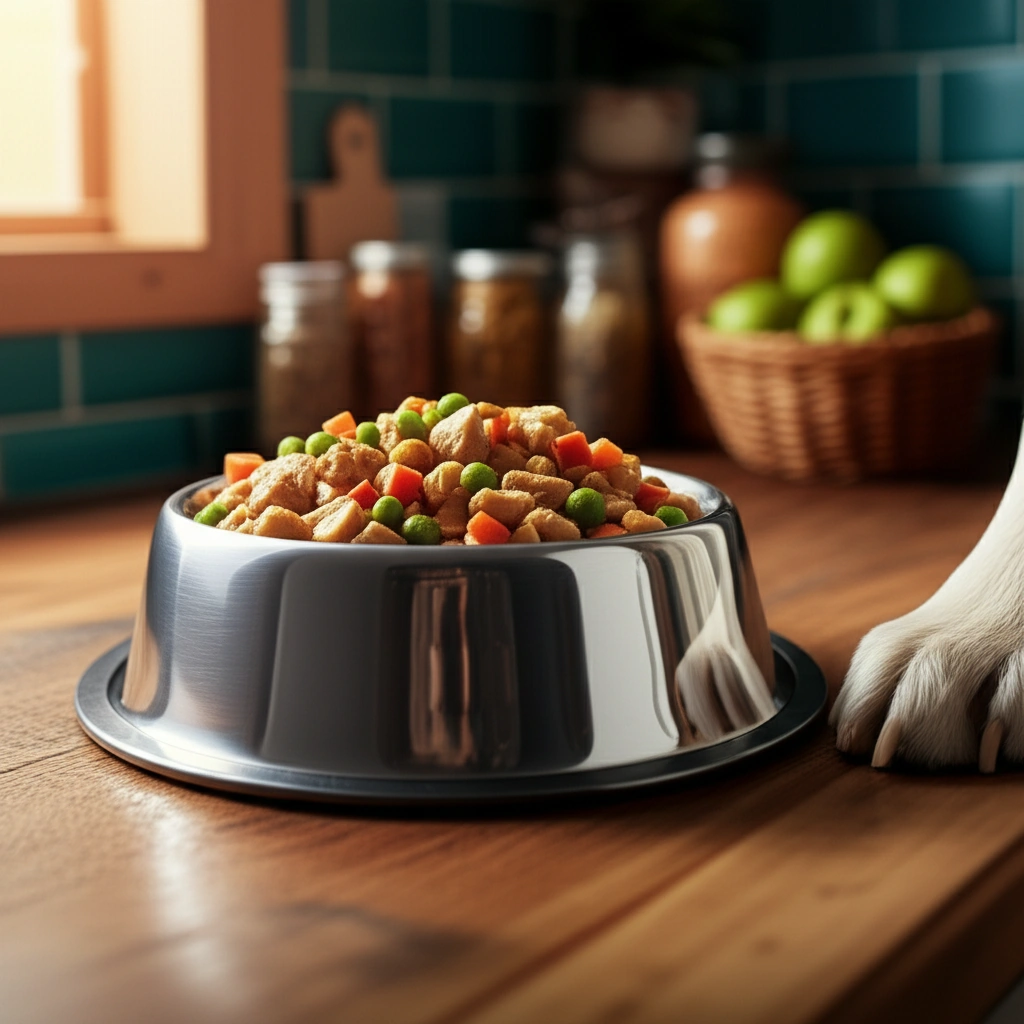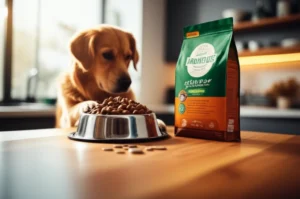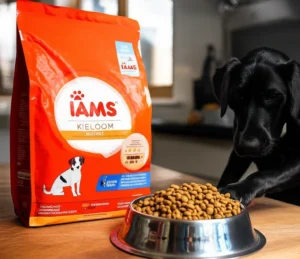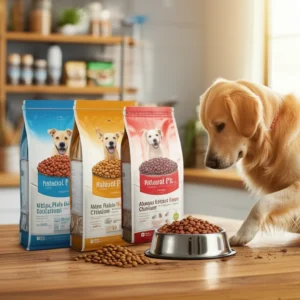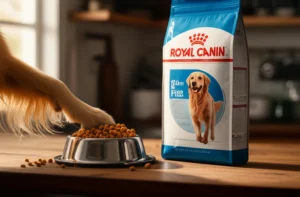Okay, let’s get right to it. You’re probably wondering—is there really a single “#1 best dog food” out there? And the honest answer is… not exactly. The best dog food for your furry buddy isn’t a one-size-fits-all crown winner. It depends heavily on their unique needs, lifestyle, and even their little quirks.
What I can tell you upfront is this: the #1 best dog food is one that suits your dog’s age, size, health concerns, and taste buds—all while being made from quality ingredients you can trust. So, whatever you do, don’t just grab the flashiest bag off the shelf. Dig a little deeper.
Why One Size Does NOT Fit All
Here’s where a lot of dog parents get tripped up. Dogs come in all shapes and sizes, from tiny Chihuahuas to giant Great Danes, with wildly different needs. A food perfect for your sprightly puppy probably won’t cut it for your wise senior, and what’s ideal for small breeds might not suit the large guys.
Different Needs for Different Dogs
Age matters. Puppies are growing machines and need nutrient-dense, calorie-rich food. Adults need balanced maintenance, and seniors benefit from joint support and easier digestion.
Breed and size also play a big role. Large dogs often require special formulas to help protect joints and manage weight, while smaller dogs might need kibble sized just for their tiny mouths and extra energy.
Health concerns? Even more important. Allergies, sensitive stomachs, or conditions like diabetes mean your dog’s food needs to be carefully chosen. And some dogs thrive better on grain-free or limited ingredients diets, while others don’t need that at all.
What Does “Best” Even Mean?
In most dog food reviews and rankings, “best” typically points to:
- Complete nutrition. A balanced, AAFCO-certified formula with all essential vitamins and minerals.
- Quality ingredients. Look for real meat, whole fruits and veggies, and minimal fillers.
- Safety and transparency. Brands that have clean recall histories, safe manufacturing standards, and clear labeling.
Beware of marketing hype — sometimes “best” is just a clever tagline, not a guarantee.
How to Choose the Best Dog Food for Your Dog
You might feel overwhelmed already, but I promise, with a little guidance, it’s doable. Here’s a simple roadmap to find a great match for your pup.
Step 1: Know Your Dog Inside Out
Start with a quick “profile” of your dog’s:
- Age, weight, and breed/size
- Energy/activity level
- Health conditions or allergies
- Food preferences and any past reactions
This info is gold when choosing suitable foods, and it’ll help your vet give tailored advice too.
Step 2: Become a Label Detective
Don’t just eyeball the shiny packaging. Look for:
- First 5 ingredients. Real named meats (e.g., chicken, beef) should be at the top, not vague “meat meal” or “animal by-products.”
- Guaranteed analysis. Check protein, fat, fiber, and moisture to make sure it fits your dog’s needs.
- AAFCO statement. This lets you know the food meets basic nutritional levels for your dog’s life stage.
For example, if your dog is a picky eater or has some gut issues, some foods formulated with gentle proteins and probiotics can make a big difference.
Step 3: Quality Over Fillers and Fancy Words
High-quality foods usually have whole ingredients and avoid cheap fillers like excessive corn, wheat, and soy (though sometimes small amounts are okay).
Also, the way food is processed matters. Gently cooked fresh food or air-dried options usually keep vitamins better than those cooked at high heat in extrusion processes.
Step 4: Price, Availability, and Practicality
Price tags aren’t everything, but they do matter. It’s smart to calculate cost per day and compare. Sometimes spending a little more upfront on your dog’s food can save money on vet bills later. But if your budget is tight, there are best affordable dog food options that balance quality and cost without breaking the bank.
Step 5: Try It Out and Watch Closely
Transition gradually over a week or so—no shocker, but a sudden change could upset your dog’s tummy. After the switch, watch their coat, stool, energy levels, and appetite. If things look good, congrats! If not, don’t hesitate to tweak or consult your vet.
Top Dog Food Choices By Category
Now, let’s get into some of the options that keep popping up as favorites—not just from reviewers but from dog parents and vets alike.
Fresh and Human-Grade Foods
For pet parents who want all-natural, fridge-fresh meals, brands like The Farmer’s Dog, Nom Nom, and Ollie lead the pack. These foods use human-grade ingredients, gently cooked to preserve nutrients and tailored personally to your pup’s specifics. They’re perfect for dogs with allergies, picky eaters, or those needing gut health support.
Best Dry Dog Food
If you want convenience and a longer shelf life but still top nutrition, dry food is king. Look for ones that use real meat at the top and whole-food ingredients. Some favorites that consistently get high ratings include Blue Buffalo, Nutro, and Taste of the Wild, but there are loads of great ones to consider.
You can check out the in-depth guide on the best dry dog food to get more tailored info and ideas.
For Dogs with Sensitive Stomachs or Digestive Issues
Gut health is a big deal, right? Foods enriched with probiotics, prebiotics, and gentle protein sources help support digestion and nutrient absorption. Brands focusing on this niche have formulated their food with fiber-rich ingredients like pumpkin and chia seeds and include live cultures.
If gut health is a concern, definitely peek at the information on best dry dog food for gut health to find something your dog will thrive on.
Big Dogs vs. Small Dogs: Different Kibble for Different Sizes
Did you know large breeds often benefit from food with joint-supporting nutrients like glucosamine? Smaller dogs appreciate smaller, crunchier kibble suited to their jaws and metabolism.
Brand Spotlights: What to Know
Iams dog food is a popular choice for many, offering ranges tailored to life stages and is easy to find in stores. That said, it’s good to read reviews and consider ingredient quality if your pup has specific needs—learn more on iams dog food.
Royal Canin dog food is often recommended by vets for breed- or condition-specific formulations. It’s a science-driven brand, especially useful for dogs with allergies or medical issues.
Ingredients and Warning Signs: What to Avoid
Here’s a quick heads-up on dodgy ingredients and tactics that some dog food brands sneak in to cut costs:
- Vague meat sources: Words like “meat meal” or “animal by-product” without clear source names should make you pause.
- Excess fillers: Too much corn, wheat, or soy can trigger allergies or add empty calories.
- Artificial colors and flavors: These don’t help nutrition and can irritate some dogs.
Also, keep an eye on brands with frequent recalls or opaque sourcing. That’s where a trusted resource like Dog Food Advisor helps you vet your options with science and data.
Special Diets and Clinical Needs
If your dog has serious health issues like kidney disease or severe allergies, prescription diets guided by your vet are the way to go. These formulas are designed to address very specific conditions and aren’t your average grocery store budget brand.
For weight management or senior dogs, special considerations include fewer calories, joint support, and higher digestibility.
Putting It All Together: A Quick Comparison Table
| Category | Best For | Top Example Brands | Pros | Considerations |
|---|---|---|---|---|
| Fresh Human-Grade | Personalized nutrition, picky eaters, allergies | The Farmer’s Dog, Nom Nom, Ollie | High nutrient retention, fresh ingredients | Higher cost, refrigerate, subscription |
| High-Quality Dry Food | Convenience, long shelf life | Blue Buffalo, Nutro, Taste of the Wild | Variety, balances nutrition and cost | Check ingredients carefully |
| Gut Health Focus | Sensitive stomachs, digestion support | Selected dry foods with probiotics/prebiotics | Supports digestion and immune system | Transition slowly |
| Affordable Options | Budget-conscious, everyday feeding | Various quality brands | Balanced nutrition for price | Check ingredient list and recalls |
Wrapping Up: What’s The Takeaway?
Choosing the #1 best dog food is like picking a teammate for life—they’ve got to fit just right to keep your furry pal happy and healthy. It’s not about hype or flashy packaging; it’s about understanding your dog’s unique needs, reading labels like a pro, trusting reputable brands, and keeping an eye on how your dog responds.
With thoughtful choices and maybe a little trial and error, you’ll find the food that’s a perfect match—from the best dry dog food your budget allows, to special gut health blends that make those tummy troubles a thing of the past. And if you want to dive deeper, feel free to explore guides on best dry dog food, best dry dog food for gut health, best affordable dog food, and iams dog food.
After all, every dog deserves the best fuel to wag their tail through happy adventures—and that “#1 best dog food” is the one that fits your best friend just right. What’s your dog’s favorite? Have you discovered any hidden gems? I’d love to hear your thoughts and stories!

